Power Distribution Method of Multi-Stack Fuel Cell System Based on Forgetting Factor Recursive Least Square
-
摘要:
为减小多堆燃料电池系统 (multi-stack fuel cell system, MFCS)中单体燃料电池运行期间输出功率的大范围变化,提高MFCS平均效率,以保证各燃料电池长期稳定运行,针对大功率质子交换膜燃料电池 (proton exchange membrane fuel cell,PEMFC)系统,提出了一种基于遗忘因子递推最小二乘 (forgetting factor recursive least square,FFRLS)在线辨识地改进链式功率分配方法. 该方法利用FFRLS算法的实时在线辨识能力估算运行中的每个燃料电池最大效率范围 (maximum efficiency range,MER),并将其边界值作为约束参考值实时更新链式功率的限定区间;然后,依据负载需求功率变化和各燃料电池效率高低顺序分配各电堆出力;最后,在搭建的RT-LAB半实物平台上进行试验分析. 试验结果表明:与平均功率分配和传统链式功率分配方法相比,本文所提方法对MFCS效率分别提高了0.93%和1.95%.
-
关键词:
- 多堆燃料电池系统 /
- 遗忘因子递推最小二乘 /
- 最大效率范围 /
- 改进链式功率分配 /
- 半实物平台
Abstract:In order to reduce the large-scale variation in the output power of the single fuel cell during the operation of the multi-stack fuel cell system (MFCS), improve the average efficiency of the MFCS and ensure the long-term stable operation of each fuel cell, based on the forgetting factor recursive least squares (FFRLS), an improved chain power distribution method with online identification is proposed for the high-power proton exchange membrane fuel cell system. This method uses the real-time online identification capability of the FFRLS algorithm to estimate the maximum efficiency range (MER) of each fuel cell in operation, and uses its boundary value as the constraint reference value to update the limited range of chain power in real time. Then the output of each stack is distributed according to the load demand power change and the order of fuel cell efficiency. Finally, on the semi-physical platform RT-LAB, compared with the average and traditional chain power distribution methods, the proposed method improves the efficiency of MFCS by 0.93% and 1.95% respectively.
-
随着社会对城市内景观要求的不断提高,且传统的化石燃料也在开始逐渐枯竭,开发各种可再生能源开始受到各国的支持[1], 其中,氢能的应用前景最为广阔[2]. 在此背景下,燃料电池随之出现在众多研究者的眼中,作为可将氢中的化学能转化为电能的潜力发电装置备受到国内外研究者喜爱[3]. 在不同的燃料电池类型中,质子交换膜燃料电池 (proton exchange membrane fuel cell,PEMFC)具有低温运行和启动快等优势[4]. 因此,PEMFC系统在分布式发电、新能源汽车移动设备等领域得到广泛运用.
如今,需要用大功率驱动的交通车辆,如现代城市的有轨电车和高速列车,因其舒适、快捷、方便等优点,作为一种省与省间的常用交通运输工具,将PEMFC发电系统应用于这类运输领域是一种具有巨大发展潜力的新型运营方式[5]. 但是由于单堆技术、材料等无法满足大功率列车长时间运行的缺点,导致燃料电池 (fuel cell, FC)发电系统在大功率机车行业的大规模应用成为巨大的挑战. 不过,使用多堆燃料电池系统 (multi-stack fuel cell system,MFCS)可以一定程度上地代替大功率PEMFC的开发. MFCS是由几套低功率FC系统组成,而不是只由一个高功率的堆单独构成,这使得对FC的替换更加方便[6],从而大大提高了系统的稳定性和耐久性. 但是,如今所用PEMFC是一个强耦合的多物理系统,其电气性能取决于其性能退化程度和运行参数,如气体湿度、压力和温度. 虽然有大量的研究人员正在研究电磁系统,但这些现有策略的主要缺点是将燃料电池视为静态模型,没有考虑燃料电池的性能会随着运行状态而变化. 因此,有必要在MFCS控制中考虑这些参数变化对FC运行效率区间变化的影响. 在文献[7]中,提出了自适应递归最小二乘 (adaptive recursive least squares,ARLS)算法来识别燃料电池的性能,以找到其最大效率和功率点. 文献[8]提出了一种遗忘因子递推最小二乘 (forgetting factor recursive least squares,FFRLS)在线辨识方法,以提高在变化负载下光纤通道参数估计精度. 结果表明,该在线辨识方法可以在不考虑多物理量波动的情况下就估计出光纤通道参数. 文献[9]提出了一种效率优化策略,在双堆FC系统中进行功率分配,提高FC运行时长,仿真结果验证了该策略的有效性. 此外,为了实现串联式MFCS的最优功率分配,文献[10]提出了一种最大功率跟踪方法.
综上所述,需考虑PEMFC的一个“最大效率范围”(maximum efficiency range,MER),在这个范围内控制PEMFC功率输出,有助于优化系统效率和PEMFC性能[11]. 此外,根据前面的描述,该MER会随着外部参数(运行条件、温度、湿度等)的变化而移动[12]. 然而,很少有研究将MFCS中的功率分配与单个PEMFC的MER识别方法联系起来共同优化FC系统效率. 因此,本文提出了一种基于在线辨识的MFCS改进型链式功率分配方法,用以提高FC系统效率和延长堆的使用寿命,促进FC在高功率场合的大规模应用. 此外,为说明此方法的优势所在,本文将所提方法与平均功率分配方法和传统链式功率分配方法做了对比分析. 最后,通过搭建的RT-LAB半实物平台,测试了所搭建的MFCS的性能以及所提出的基于在线辨识的改进型链式功率分配方法的有效性和实用性.
1. 多堆燃料电池系统建模
由于并联拓扑结构在系统复杂度和系统性能方面都优于串联拓扑结构,因此,本文构建的MFCS采用前一种拓扑,如图1所示. 本研究开发的大功率MFCS由3套独立的PEMFC系统、控制器以及单向DC/DC变换器组成. 所用3个PEMFC虽然是同一型号,但由于使用时间不同性能上有一定差异,其主要参数如表1中所示,3个PEMFC的极化曲线如图2所示.
建立PEMFC仿真模型,如式(1)所示[13].
UFC=Eoc−Uact −Uohmic, (1) 式中:UFC为电堆输出电压;Eoc为开路电压;Uact为极化电压降;Uohmic为欧姆电压降.
表 1 PEMFC电堆参数Table 1. PEMFC stack parameters参数 取值 额定功率/kW 110 额定电流/A 238 电压范围/V 480 ~ 660 氢气压力/MPa 0.8 冷却液温度/℃ 50 ~ 75 这些参数可进一步表示[13]如下:
EOC=Kc[RTzF(0.5lnPO2+lnPH2)+−44.43zF(T−298)+E0], (2) {Uact=NA(lniFC−lni0)τs+1,Uohmic=RFCiFC, (3) 式(2)、(3)中:Kc为额定电压参数;T为PEMFC的运行温度;E0为标准压力下的电动势;z为电子转移数;F为法拉第常数;R为气体常数;
PH2 和PO2 分别为氢气和氧气压力;N为单体片数;RFC为PEMFC内阻;iFC为PEMFC模型测试电流;A 和i0分别为埃菲尔斜率和交流电流,如式(4)所示.{i0 = zFk(PH2 + PO2)Rhe−ΔGRT,A=RTzαF, (4) 式中:k为玻尔兹曼常数;h普朗克常数;−ΔG为吉布斯能量;α为转移系数.
根据建立的模型和实验测试数据校准相应参数[14],并将实验测试数据和模型仿真结果对比分析,如图2所示,本文所建立模型能很好地反映PEMFC的极化曲线变化.
2. 燃料电池系统效率分析
本研究的主要目的是优化燃料电池系统的效率,使其各电堆尽可能在MER中运行. 因此,PEMFC系统的效率是需要分析的重要指标.
PEMFC效率定义为电池组产生的电能与供应的氢气化学能之间的比值. PEMFC的效率计算如式(5)所示[15].
ηstack=PSFCPH2×100%=VcellIFC−2FΔHHVIFC×100%=Vcell1.482×100%, (5) 式中:PSFC为单片电池产生的功率;Vcell为PEMFC单片电压;IFC为PEMFC输出电流;
ΔHHV 为氢气高热值.为确保PEMFC系统正常运行,一般需要一些辅助设备例如单向DC/DC变换器、控制器、燃料电池辅机等,这些均会影响燃料电池系统效率[16]. 因此,每个PEMFC系统的效率
ηsys 可由式(6)计算得到.ηsys=ηstackηFCηaux=Vcell1.482(1−PauxPFC)×100%, (6) 式中:ηaux为所有辅助设备的效率;ηFC为氢气利用率,通常该值为99% ~ 100%[17],本文中ηFC的值为100%;Paux为PEMFC控制器消耗的功率、DC/DC变换器消耗功率以及DSP控制器消耗功率的总和.
根据式(4)可得PEMFC系统的效率曲线如图3所示,图中:PFCj_L和PFCj_H分别为PEMFCj的低功率值和高功率值,j = 1,2,3.
如图3所示,依据所用3个不同使用时长的堆所测效率/功率曲线数据,将效率高于EFF1、EFF2以及EFF3的区域定义为各自的高效率区域,而相对应的功率区间即为本文研究中的MER. 此外,根据前面的描述,MER将随着外部条件的改变而移动,图3中各个PEMFC的边界功率值(PFCj_L和PFCj_H)会随着堆长期的运行而发生变化. 因此,为更好地动态调节PEMFC高效运行区域,使用FFRLS在线参数识别算法来估计MER的边界功率值,使各PEMFC系统尽可能在MER中运行,进而实现延长堆的使用寿命,提高MFCS平均效率,减少氢气消耗.
3. 基于在线辨识的链式功率分配方法
3.1 基于FFRLS算法的MER在线识别
FFRLS算法已经在许多参数识别应用中得到采用,该算法在一些研究中有详细描述[18]. 根据图3的曲线形式,本文是通过六阶多项式来描述PEMFC系统输出功率与效率的数学模型, 表达式如(7)所示.
\begin{split}& {{\boldsymbol{\eta}} _{{\rm{sys}}}} = {a_0} + {a_1}{{\boldsymbol{P}}_{{\rm{FC}}}} + {a_2}{{\boldsymbol{P}}^2_{{\rm{FC}}}} + {a_3}{{\boldsymbol{P}}^3_{{\rm{FC}}}} + \\&\quad {a_4}{{\boldsymbol{P}}^4_{{\rm{FC}}}} + {a_5}{{\boldsymbol{P}}^5_{{\rm{FC}}}} + {a_6}{{\boldsymbol{P}}^6_{{\rm{FC}}}} , \end{split} (7) 式中:PFC为燃料电池输出功率矩阵;a0 ~ a6为系统的未知参数.
对于单输入单输出(single input single output, SISO)系统,可以采用自回归移动平均(auto regressive moving average, ARMA)模型[19]来描述被控对象. 模型可用式(8)表示.
{\boldsymbol{y}}(k) = {\boldsymbol{\theta}} (k){{\boldsymbol{\phi}}^{\rm{T}} (k)} + {\boldsymbol{e}}(k), (8) 式中:y和θ分别为系统输出和输入向量;ϕ为系统未知参数向量;e为辨识误差;k为离散时间.
FFRLS算法由误差e定义,性能标准用J表示,如式(9)所示.
J = {\sum\limits_{k = 1}^L {{\mu ^{k}}e^2(k)} }, (9) 式中:μ (0< μ < 1)为遗忘因子,用于增强对最近识别误差的敏感性,并降低前期估计误差的权重[20]; L为数据迭代时间长度.
可以利用式(10)来实现FFRLS算法.
\left\{ \begin{array}{l} {\boldsymbol{\theta}}(k)={\boldsymbol{\theta}} (k-1)+\\ \;\;\;\;{\boldsymbol{L}}(k){\text{[}}{\eta _{{\rm{sys}}}}(k)-{{{\boldsymbol{P}}_{{\rm{FC}}}^{\rm{T}}}(k)}{\boldsymbol{\theta}} (k-1){\text{]}}, \\ {\boldsymbol{L}}(k) = \dfrac{{{\boldsymbol{P}}(k - 1){{\boldsymbol{P}}_{{\rm{FC}}}}(k)}}{{\mu + {{{{\boldsymbol{P}}_{{\rm{FC}}}^{\rm{T}}}(k)}}{\boldsymbol{P}}(k - 1){{\boldsymbol{P}}_{{\rm{FC}}}}(k)}},\\ {\boldsymbol{P}}(k) = \dfrac{1}{\mu }{\text{[}}{\boldsymbol{I}} - {\boldsymbol{L}}(k){{{\boldsymbol{P}}_{{\rm{FC}}}^{\rm{T}}}(k)}{\text{]}}{\boldsymbol{P}}(k - 1), \end{array} \right. (10) 式中:P为预测的协方差矩阵;L为卡尔曼增益矩阵.
3.2 改进型链式功率分配方法
链式功率分配方法是一种顺序方法[9]. 提供功率的燃料电池数量取决于功率基准. 只有当前PEMFC达到最大输出功率后,下一个PEMFC才能继续提供剩余的功率,直到达到最大功率. 该过程一直持续到所有燃料电池都被使用或达到所需功率为止,表达式如式(11)所示.
\left\{ \begin{array}{l}{P}_{{\rm{load}}}\leqslant {P}_{\mathrm{max}},\;\;{\rm{PEMFC}}1\;启动\text{,}\\ {P}_{\mathrm{max}} \lt {P_{\rm{load}}}\leqslant 2{P}_{\mathrm{max}},\;\;{\rm{PEMFC}}1、{\rm{PEMFC}}2 \;启动\text{,}\\ {P}_{{\rm{load}}} \gt \text{2}{P}_{\mathrm{max}},\;\;所有\;{\rm{PEMFC}}\;都启动,\end{array} \right. (11) 式中:Pload为系统负载功率;Pmax为燃料电池最大功率.
本文为提高MFCS效率,提出了一种基于在线辨识的改进型链式功率分配方法. 该方法利用FFRLS在线辨识算法实时获取MER的值(PFCj_L和PFCj_H),并将其作为链式功率输出约束条件,以优化PEMFC运行过程中效率不佳和性能差异造成的功率分配问题,增加性能好的堆出力,减少性能差的堆出力以及输出功率波动以便提升PEMFC的耐久性. 该算法具体执行过程如图4所示.
4. 结果分析
4.1 试验平台介绍
加拿大Opal-RT公司开发的RT-LAB 实时仿真系统是专门针对电力电子、电力系统、电力拖动等系统实时仿真的运行平台,可以对基于MATLAB的Simulink模型进行实时仿真. 本文利用RT-LAB的半实物平台对Simulink模型中的模型和控制器中的算法进行测试,首先将在线辨识和功率分配算法写入DSP中,在RT-LAB中搭建仿真模型,最后在DSP控制下完成实时在线验证. 整个系统如图5所示.
4.2 平均功率分配方法
功率分配方法是在组成系统的不同PEMFC之间分配参考功率,则
{P_{{\rm{load}}}} = {P_{{\rm{FC1}}}} + {P_{{\rm{FC2}}}} + {P_{{\rm{FC3}}}}, (12) 式中:PFCj为PEMFCj的功率.
分配系数K1 ~ K3由式(13)引入和定义.
\left\{ \begin{array}{l} {K_1} = {{{P_{{\rm{FC1}}}}}}\left /{{{P_{{\rm{load}}}}}}\right .,\\{K_2} = {{{P_{{\rm{FC2}}}}}}/{{{P_{{\rm{load}}}}}},\\{K_3} = {{{P_{{\rm{FC3}}}}}}/{{{P_{{\rm{load}}}}}},\\{K_1} + {K_2} + {K_3} = 1. \end{array}\right. (13) 通过在3个PEMFC之间平均分配参考功率来达到供应负载需求的目的,则
{K_1} = {K_2} = {K_3}. (14) 按照式(14)的分配策略,其试验结果如图6、图7所示. 从图6中可看出:所有PEMFC都具有相同的功率需求,说明本文所用的平均功率分配方法验证有效. 但由于3个PEMFC性能上有一定差异,全部以相同功率输出最终会造成PEMFC3先停运,不利于整个MFCS稳定运行,并且3个PEMFC效率特性曲线不同,以相同功率长期运行也不利于提升MFCS整体效率. 从图7可知:此时MFCS平均效率为48.98%.
4.3 传统链式功率分配方法
传统链式功率分配是依据任意MFCS中PEMFC的排列顺序,依次启动. 当第1个PEMFC输出功率达到最大功率时,第2个PEMFC补充输出,直至满足负载总需求功率为止. 各个PEMFC输出功率和MFCS效率的实验测试结果如图8、9所示.
从图8中不难看出:MFCS系统出力的方式是PEMFC1先输出功率直到输出达到限幅值,然后PEMFC2和PEMFC3依次接力输出负载剩余需求功率,说明所用传统链式功率分配方法验证有效. 但是,结合图3对各PEMFC的效率/功率曲线的分析,这种传统链式功率分配方法没有对PEMFC的运行区间约束,以至于PEMFC1、PEMFC2和PEMFC3长期在最大或最低限幅功率处运行,导致所有PEMFC效率都较低,从图9中可知:MFCS平均效率只有47.96%,造成MFCS运行成本上升.
4.4 改进型链式功率分配方法
4.4.1 FFRLS在线辨识
通过FFRLS在线辨识算法确定MER是最关键的步骤,本文利用FFRLS强大的在线拟合能力,通过获取每个PEMFC系统运行时的效率/功率曲线,然后利用高阶方程求解设定目标效率的对应功率解. 具体实验结果如图10所示.
4.4.2 基于FFRLS在线辨识的链式功率分配
改进链式功率分配方法是利用FFRLS在线辨识算法实时数据更新约束值,具体实验结果如图11、图12所示.
从图11中不难看出:该方法能有效控制PEMFC的效率区间,保证单体PEMFC系统尽量在最优效率区间运行,不仅可以提升MFCS效率,减少系统氢气消耗,还有利于减缓性能较差的PEMFC老化速率,增强了系统稳定性. 从图12可知:此时MFCS平均效率为 49.91%.
4.5 3种功率方法下MFCS效率结果对比分析
从图7、9、12的对比中不难看出:本文所提出的基于在线辨识的改进链式功率分配方法相比平均功率分配方法和传统链式功率分配方法而言,对MFCS效率分别提升了0.93%和1.95%,不仅提高了MFCS运行效率,减少了系统氢耗,也一定程度上优化了MFCS中每个PEMFC运行区间的功率波动,减缓了PEMFC老化速率. 具体MFCS效率变化数据比较结果如表2所示.
表 2 3种功率分配方法下MFCS效率变化Table 2. Changes in MFCS efficiency under three power distribution methods% 分配方法 平均效率 最大效率 最小效率 改进链式 49.91 52.43 45.82 平均 48.98 52.56 43.76 传统链式 47.96 50.12 45.91 5. 结 论
为优化各个PEMFC发电系统运行效率区间,提高MFCS平均效率延长PEMFC使用寿命,本文在分析MFCS功率分配方法的基础上,提出了一种基于FFRLS的在线辨识算法对各个PEMFC系统的MER寻找,并将其作为功率分配的实时约束条件,以优化单个PEMFC系统运行效率区间. 为验证所提方法的有效性和实用性,本文利用RT-LAB搭建了快速原型系统,并在测试平台上完成了功率分配方法和效率区间优化相结合的验证和分析,结论如下:
1) 利用FFRLS在线辨识算法实现了对系统效率/功率曲线的在线辨识.
2) 通过对高阶函数的实时求解,估算出了运行中PEMFC的MER,确定出了链式功率分配策略的边界区间.
3) 对比分析了平均功率分配和传统链式功率分配方法,本文所提方法弥补了PEMFC性能不同时功率分配的不合理和MFCS平均效率较低的缺点.
-
表 1 PEMFC电堆参数
Table 1. PEMFC stack parameters
参数 取值 额定功率/kW 110 额定电流/A 238 电压范围/V 480 ~ 660 氢气压力/MPa 0.8 冷却液温度/℃ 50 ~ 75 表 2 3种功率分配方法下MFCS效率变化
Table 2. Changes in MFCS efficiency under three power distribution methods
% 分配方法 平均效率 最大效率 最小效率 改进链式 49.91 52.43 45.82 平均 48.98 52.56 43.76 传统链式 47.96 50.12 45.91 -
[1] 陈维荣,钱清泉,李奇. 燃料电池混合动力列车的研究现状与发展趋势[J]. 西南交通大学学报,2009,44(1): 1-6. doi: 10.3969/j.issn.0258-2724.2009.01.001CHEN Weirong, QIAN Qingquan, LI Qi. Investigation status and development trend of hybrid power train based on fuel cell[J]. Journal of Southwest Jiaotong University, 2009, 44(1): 1-6. doi: 10.3969/j.issn.0258-2724.2009.01.001 [2] 李奇,孟翔,陈维荣,等. 燃料电池混合动力系统参数匹配与多目标优化[J]. 西南交通大学学报,2019,54(5): 1079-1086. doi: 10.3969/j.issn.0258-2724.20170117LI Qi, MENG Xiang, CHEN Weirong, et al. Parameter matching and multi-objective optimization of fuel cell hybrid system[J]. Journal of Southwest Jiaotong University, 2019, 54(5): 1079-1086. doi: 10.3969/j.issn.0258-2724.20170117 [3] JOSHI M C, SAMANTA S. Improved energy management algorithm with time-share-based ultracapacitor charging/discharging for hybrid energy storage system[J]. IEEE Transactions on Industrial Electronics, 2019, 66(8): 6032-6043. doi: 10.1109/TIE.2018.2871799 [4] LI H, RAVEY A, N’DIAYE A, et al. Equivalent consumption minimization strategy for hybrid electric vehicle powered by fuel cell, battery and super- capacitor[C]//IECON 2016-42nd Annual Conference of the IEEE Industrial Electronics Society. Florence: IEEE, 2016: 4401-4406. [5] ZHAI W M, CAI C B. Train/track/bridge dynamic interactions:simulation and applications[J]. Vehicle System Dynamics, 2002, 37(S1): 653-665. [6] 徐茂峻,肖壮,毛畅海,等. 关于储能式有轨电车节能优化控制研究[J]. 计算机仿真,2019,36(2): 88-94. doi: 10.3969/j.issn.1006-9348.2019.02.020XU Maojun, XIAO Zhuang, MAO Changhai, et al. Energy efficient optimization of multiple intervals for energy storage tram[J]. Computer Simulation, 2019, 36(2): 88-94. doi: 10.3969/j.issn.1006-9348.2019.02.020 [7] ETTIHIR K, BOULON L, AGBOSSOU K. Optimization-based energy management strategy for a fuel cell/battery hybrid power system[J]. Applied Energy, 2016, 163: 142-153. doi: 10.1016/j.apenergy.2015.10.176 [8] WANG T H, LI Q, YIN L Z, et al. Hydrogen consumption minimization method based on the online identification for multi-stack PEMFCs system[J]. International Journal of Hydrogen Energy, 2019, 44(11): 5074-5081. doi: 10.1016/j.ijhydene.2018.09.181 [9] HAN X, LI F Q, ZHANG T, et al. Economic energy management strategy design and simulation for a dual-stack fuel cell electric vehicle[J]. International Journal of Hydrogen Energy, 2017, 42(16): 11584-11595. doi: 10.1016/j.ijhydene.2017.01.085 [10] BODDU S, AGARWAL V. Maximum power extraction from series-connected fuel cell stacks by the current compensation technique[J]. IEEE Transactions on Power Electronics, 2015, 30(2): 582-589. doi: 10.1109/TPEL.2014.2311323 [11] 黄文强,李奇,陈维荣,等. 基于制动速度优化策略的新型供电方式 有轨电车再生制动能量回收方法[J]. 中国电机工程学报,2019,39(18): 5406-5414.HUANG Wenqiang, LI Qi, CHEN Weirong, et al. Fuel cell tram regenerative braking energy recovery method based on braking speed optimization strategy[J]. Proceedings of the CSEE, 2019, 39(18): 5406-5414. [12] HONG Z H, LI Q, HAN Y, et al. An energy management strategy based on dynamic power factor for fuel cell/battery hybrid locomotive[J]. International Journal of Hydrogen Energy, 2018, 43(6): 3261-3272. doi: 10.1016/j.ijhydene.2017.12.117 [13] 陈维荣,刘嘉蔚,李奇,等. 质子交换膜燃料电池故障诊断方法综述及展望[J]. 中国电机工程学报,2017,37(16): 4712-4721,4896.CHEN Weirong, LIU Jiawei, LI Qi, et al. Review and prospect of fault diagnosis methods for proton exchange membrane fuel cell[J]. Proceedings of the CSEE, 2017, 37(16): 4712-4721,4896. [14] LI Q, CHEN W R, LIU Z X, et al. Development of energy management system based on a power sharing strategy for a fuel cell-battery-supercapacitor hybrid tramway[J]. Journal of Power Sources, 2015, 279: 267-280. doi: 10.1016/j.jpowsour.2014.12.042 [15] FEROLDI D, SERRA M, RIERA J. Performance improvement of a PEMFC system controlling the cathode outlet air flow[J]. Journal of Power Sources, 2007, 169(1): 205-212. doi: 10.1016/j.jpowsour.2007.01.053 [16] 徐梁飞,华剑锋,包磊,等. 燃料电池混合动力客车等效氢耗优化策略[J]. 中国公路学报,2009,22(1): 104-108. doi: 10.3321/j.issn:1001-7372.2009.01.017XU Liangfei, HUA Jianfeng, BAO Lei, et al. Optimized strategy on equivalent hydrogen consumption for fuel cell hybrid electric bus[J]. China Journal of Highway and Transport, 2009, 22(1): 104-108. doi: 10.3321/j.issn:1001-7372.2009.01.017 [17] 梁枫,秦斌,王欣,等. 基于粒子群算法的地铁列车节能运行优化[J]. 湖南工业大学学报,2016,30(6): 29-33. doi: 10.3969/j.issn.1673-9833.2016.06.006LIANG Feng, QIN Bin, WANG Xin, et al. Optimization of energy saving operation for metro trains based on particle swarm optimization[J]. Journal of Hunan University of Technology, 2016, 30(6): 29-33. doi: 10.3969/j.issn.1673-9833.2016.06.006 [18] SU Shuo, LI Kepeng, SU Shuai, et al. Energy-efficient train driving strategy considering the on-board energy storage[J]. IOP Conference Series: Materials Science and Engineering, 2018, 392: 062115.1-062115.6. doi: 10.1088/1757-899X/392/6/062115 [19] 尹良震,李奇,洪志湖,等. PEMFC发电系统FFRLS在线辨识和实时最优温度广义预测控制方法[J]. 中国电机工程学报,2017,37(11): 3223-3235,3378.YIN Liangzhen, LI Qi, HONG Zhihu, et al. FFRLS online identification and real-time optimal temperature generalized predictive control method of PEMFC power generation system[J]. Proceedings of the CSEE, 2017, 37(11): 3223-3235,3378. [20] YANG Y P, LIU Z W, WANG F C. An application of indirect model reference adaptive control to a low-power proton exchange membrane fuel cell[J]. Journal of Power Sources, 2008, 179(2): 618-630. doi: 10.1016/j.jpowsour.2008.01.053 期刊类型引用(1)
1. 汪飞杰. 燃料电池电站效率匹配设计研究. 电气应用. 2024(05): 65-73 .  百度学术
百度学术其他类型引用(6)
-






 下载:
下载:






























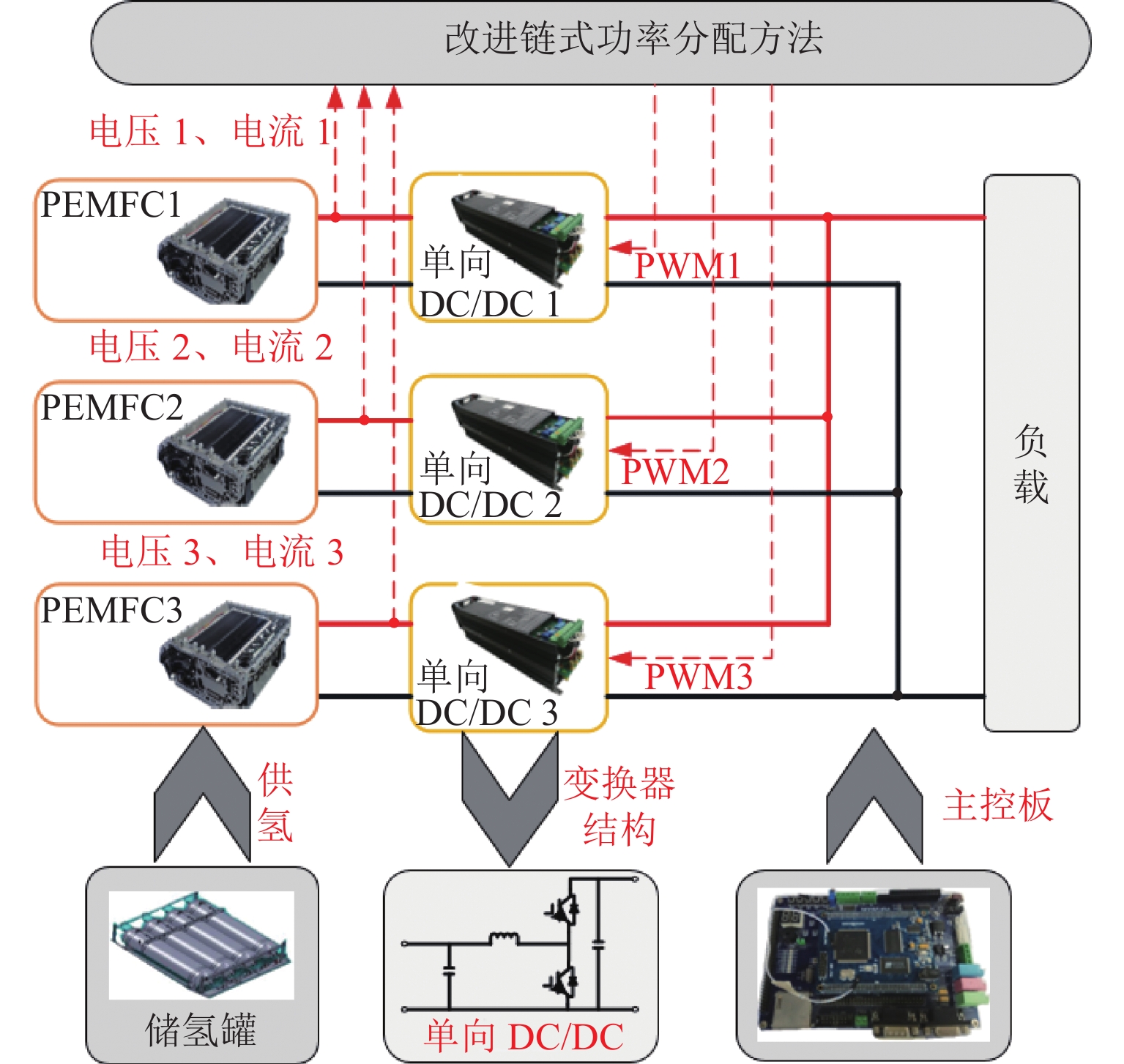
 下载:
下载:


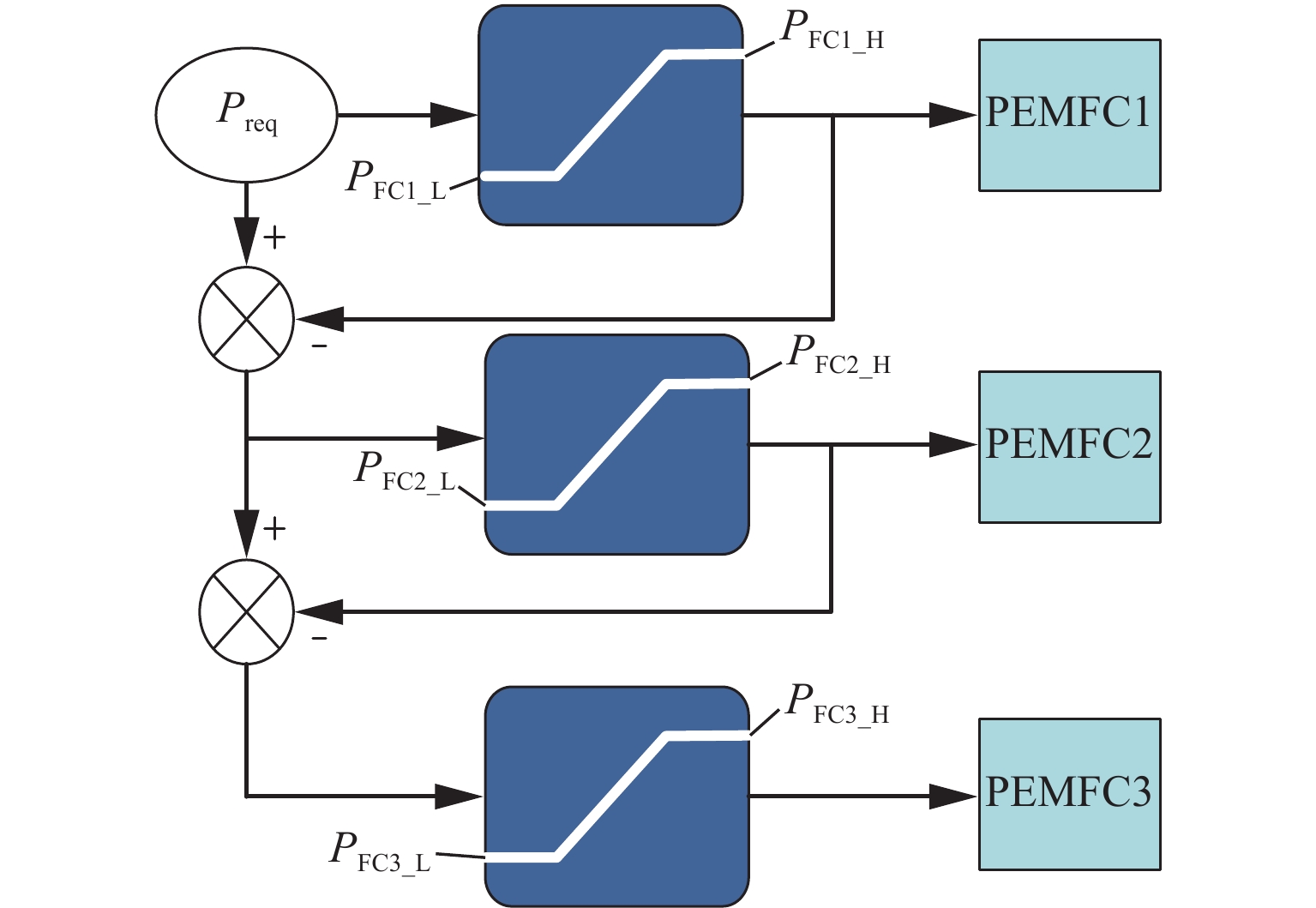
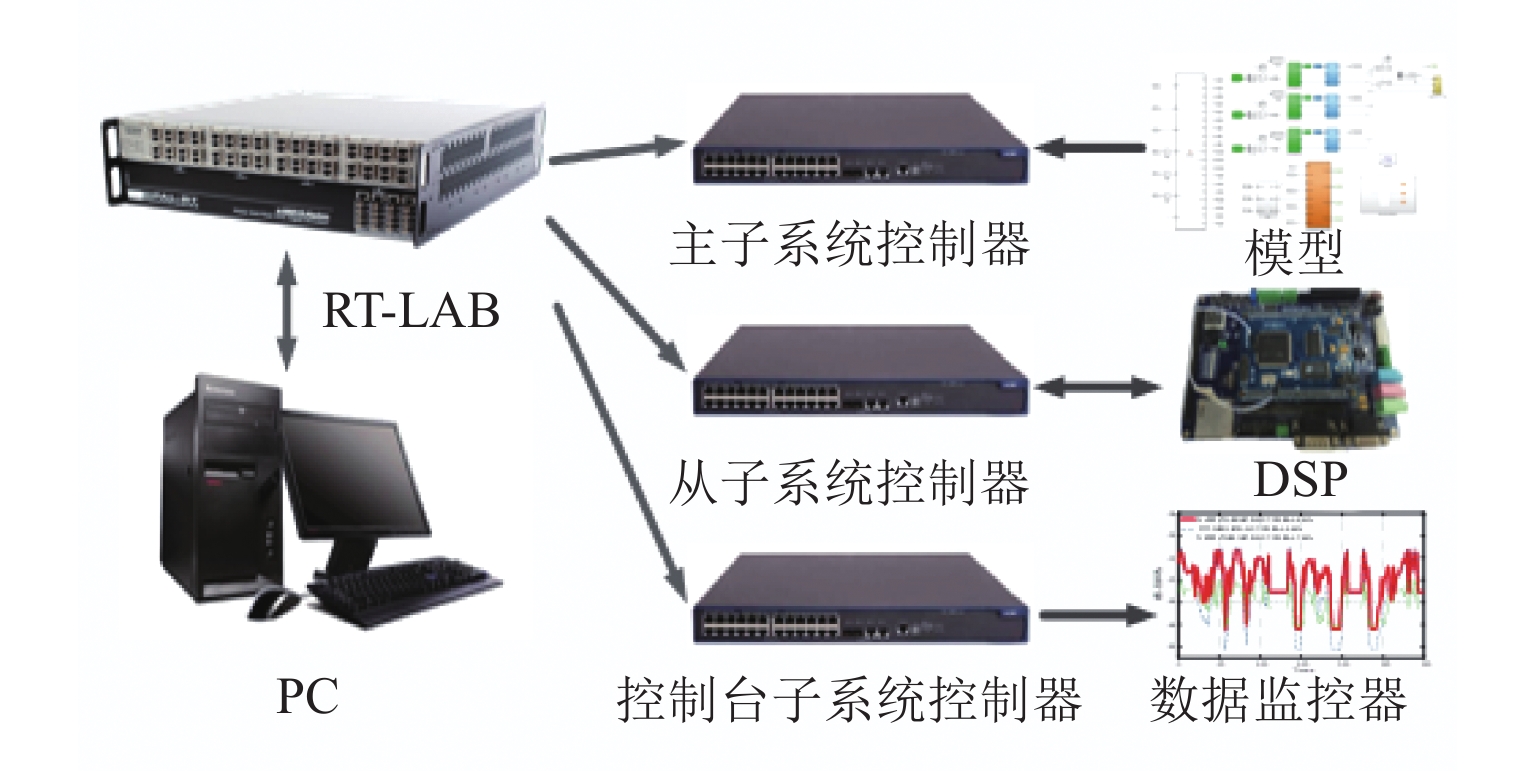
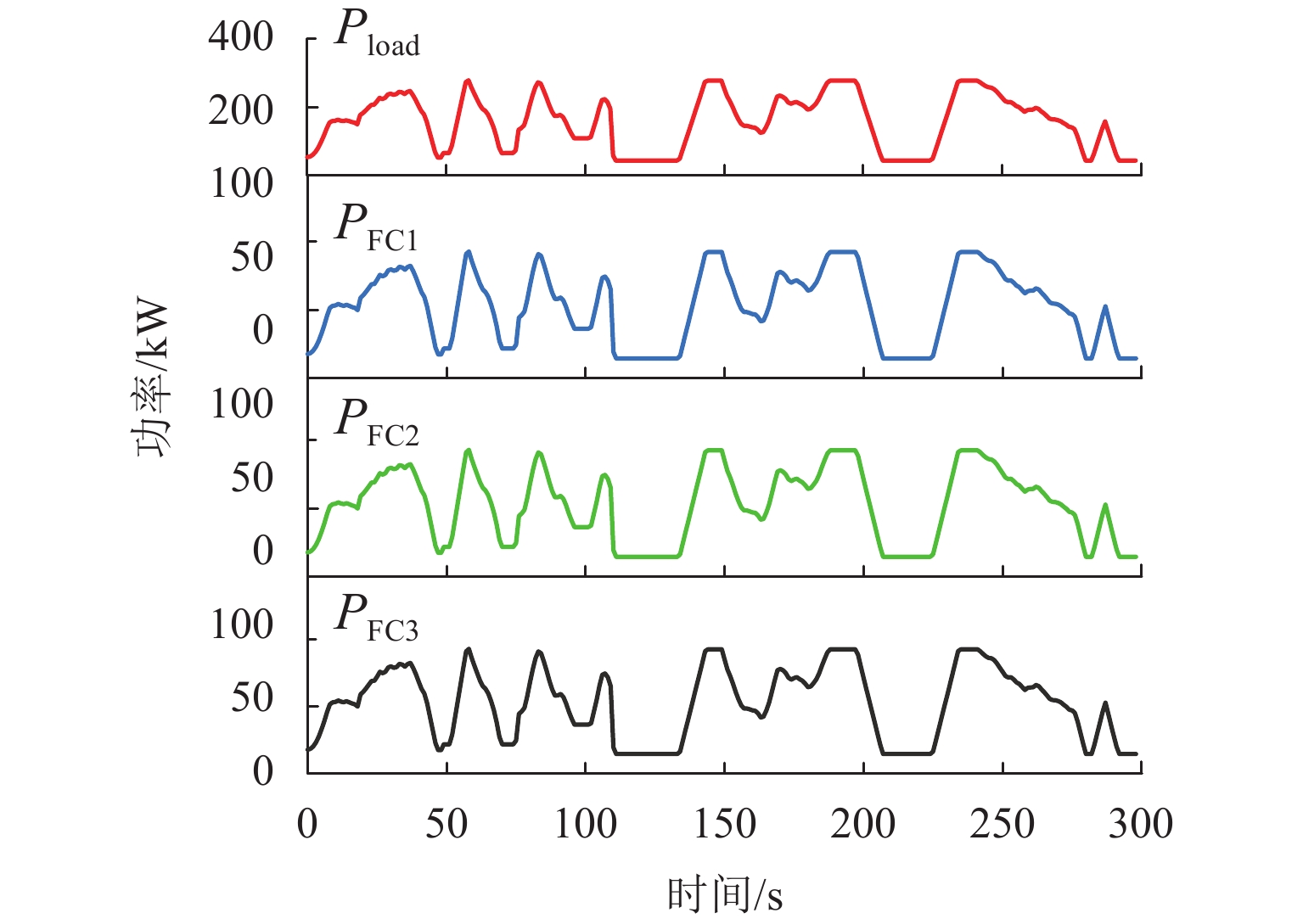
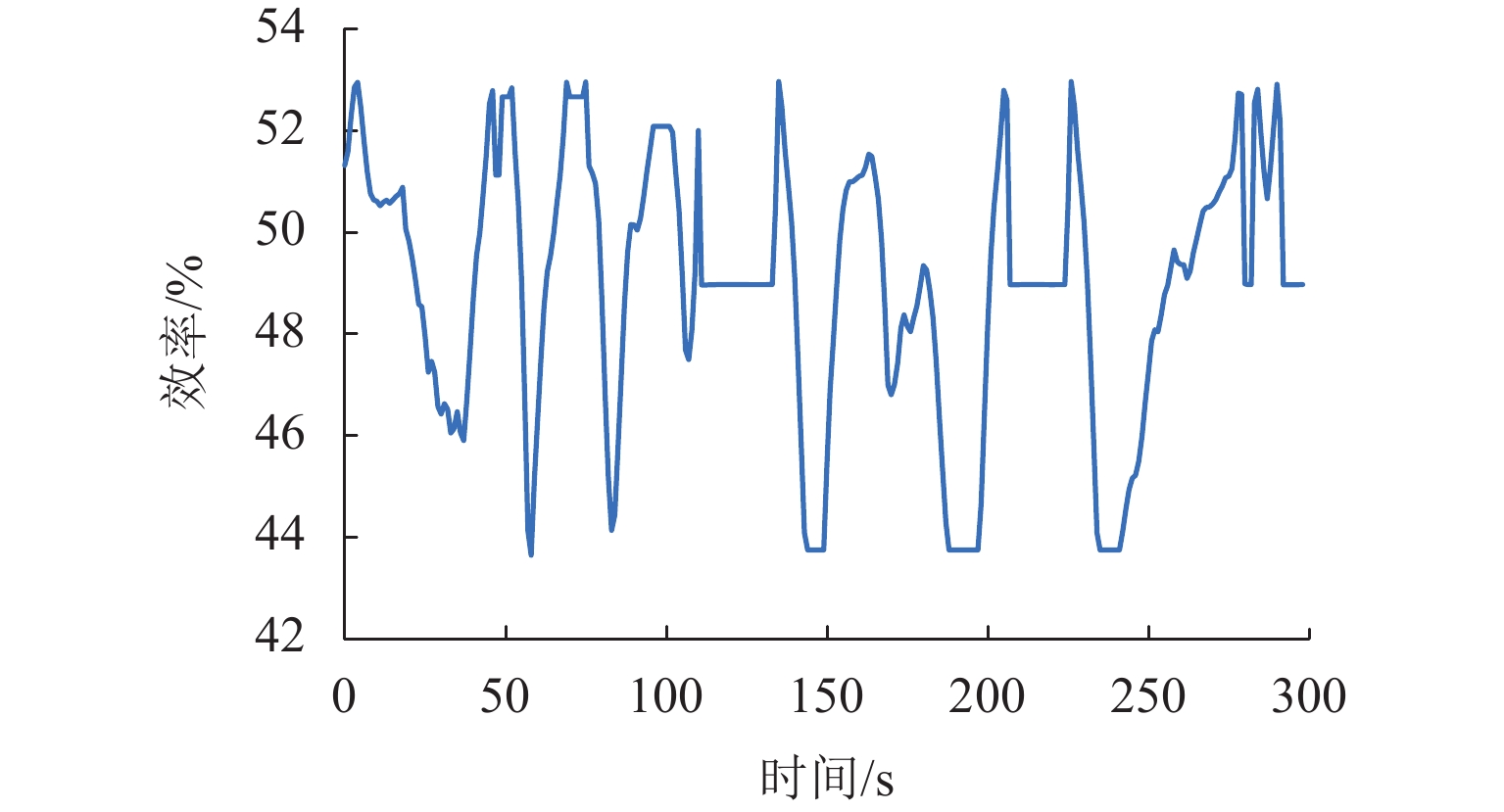
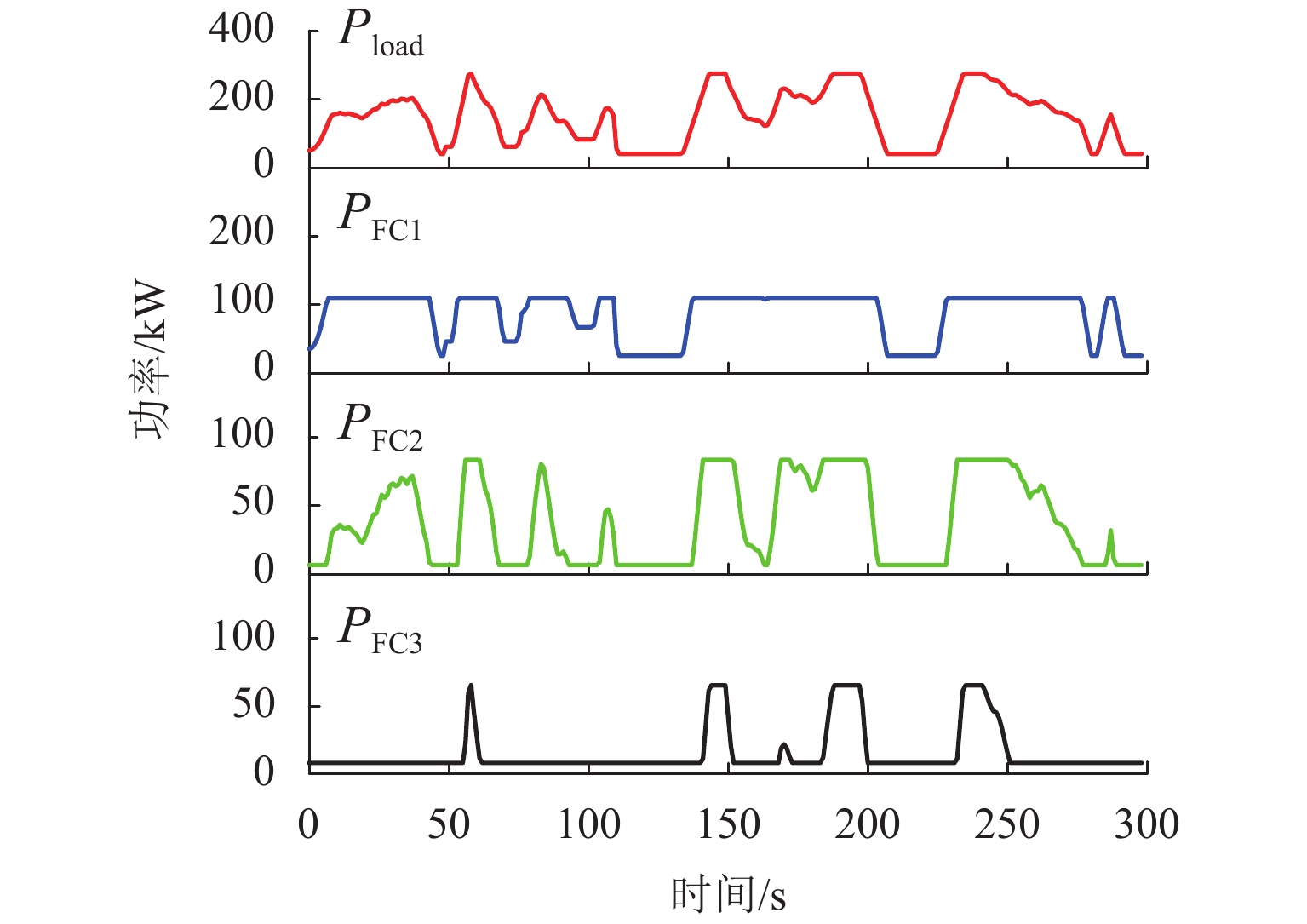
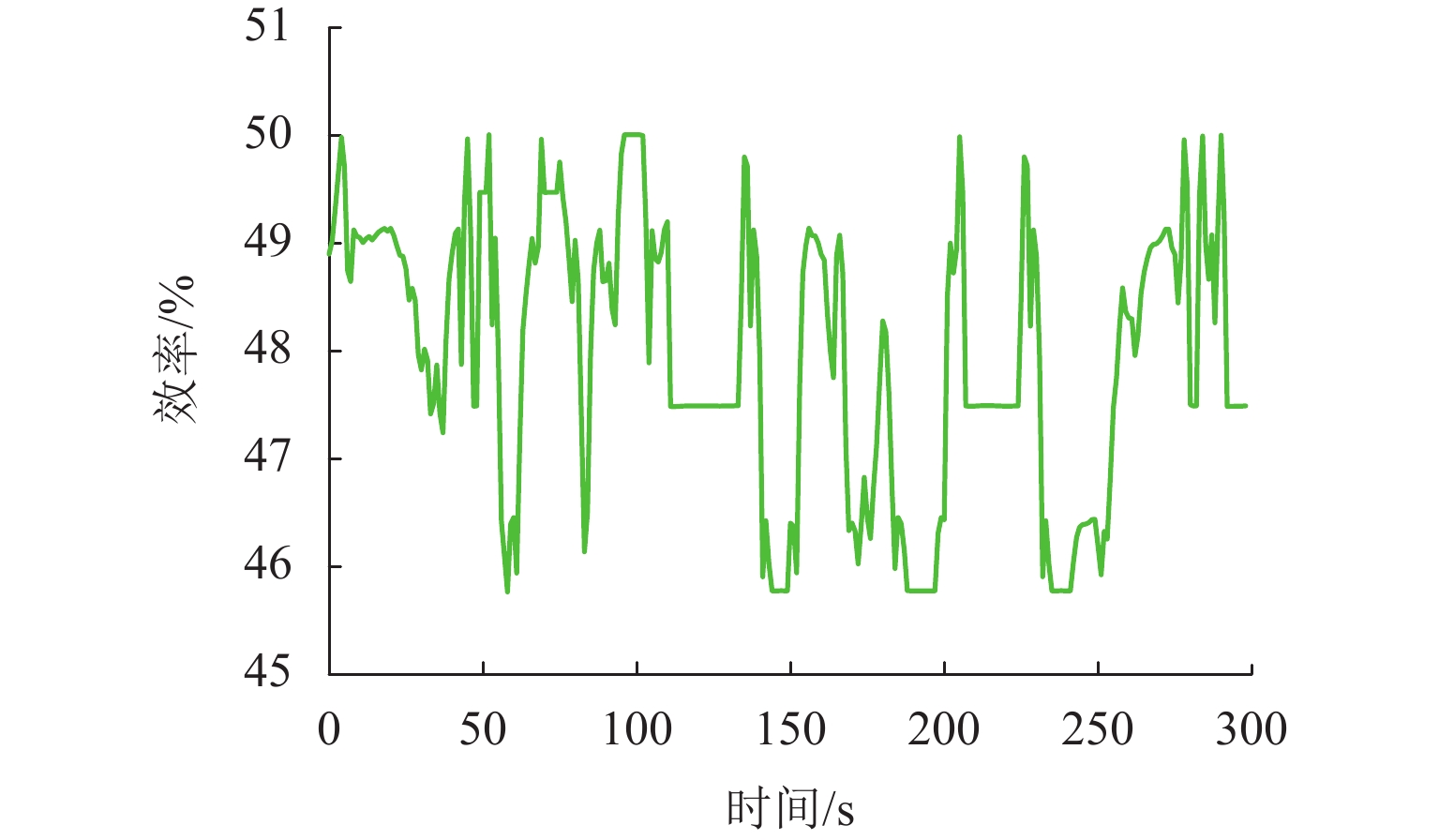

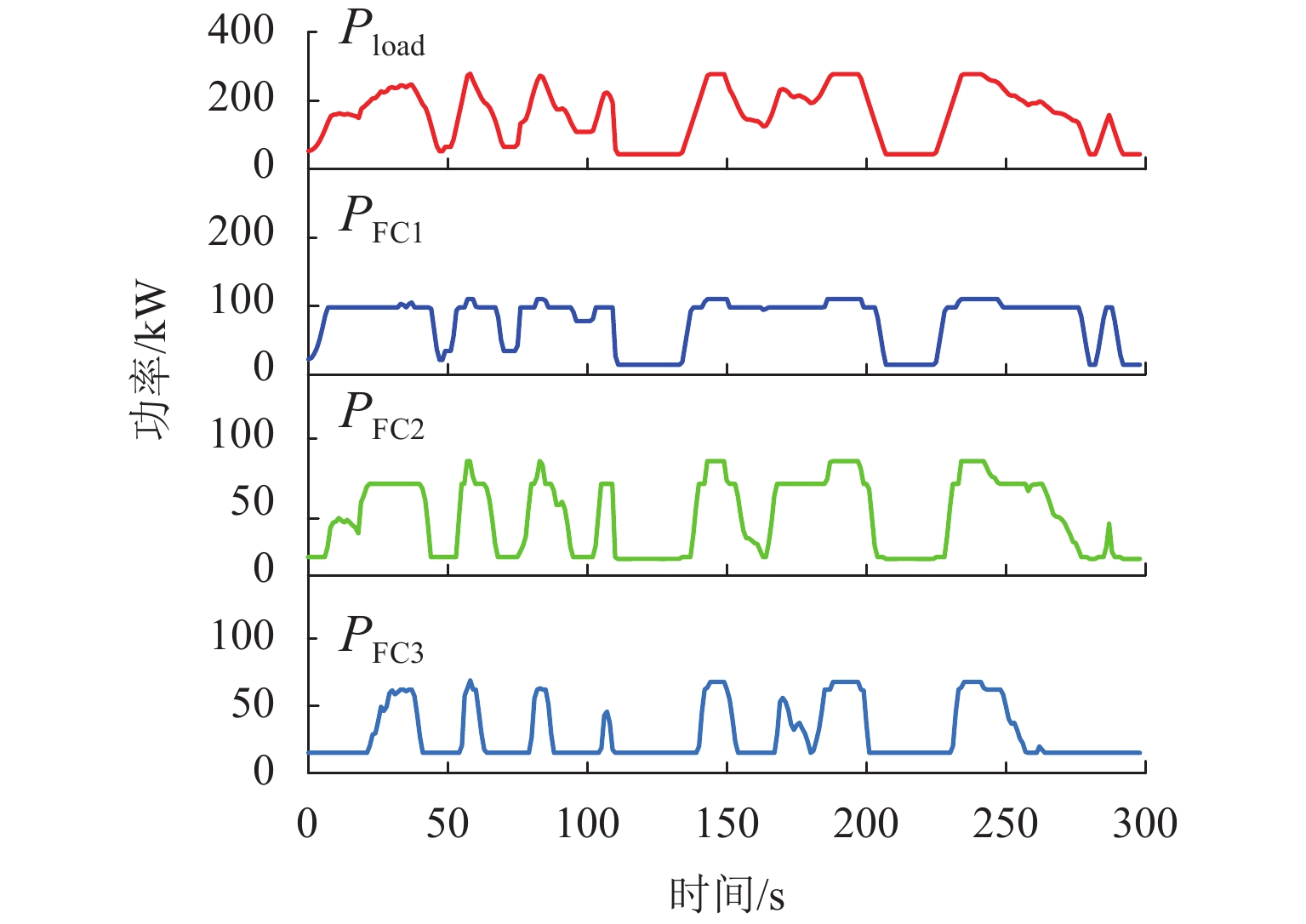
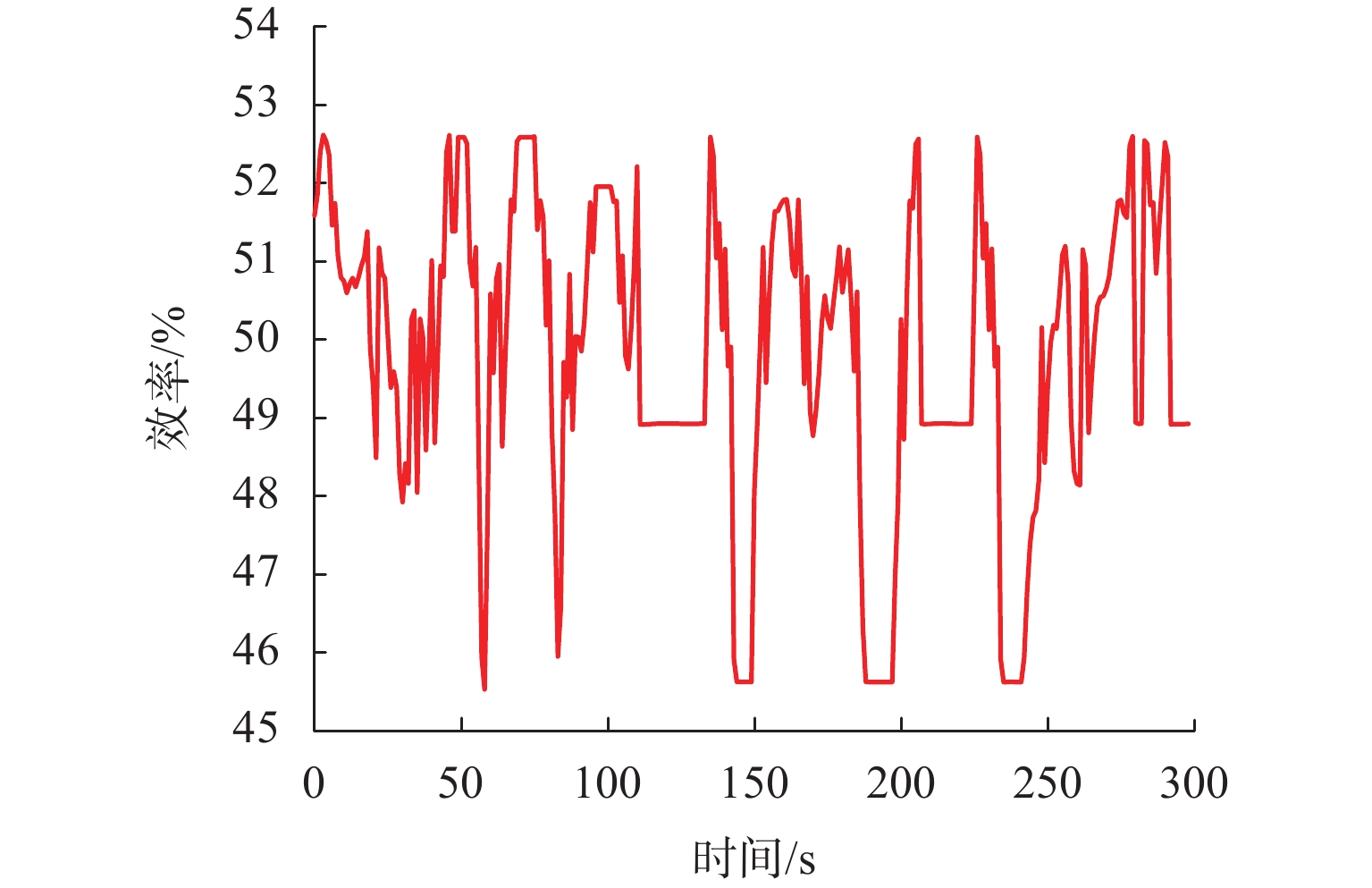
 百度学术
百度学术












